Public investment progress requires a stronger thrust
In its economic updated report released last week, the Asian Development Bank (ADB) in Vietnam warned about major risks to the country’s economic outlook remaining elevated.
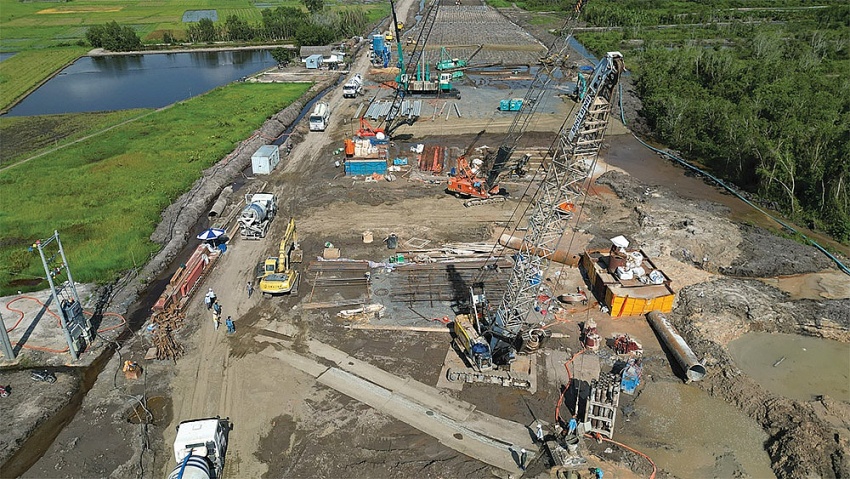 |
| Public investment progress requires a stronger thrust, photo Le Toan |
“Public investment remains a catalyst for Vietnam’s economic growth, so its effective implementation is crucial. Although the government has applied various measures to expedite public investment and enhance effective execution, more systematic measures are required to improve legal and regulatory processes and so reduce constraints on efficient delivery,” the ADB stated.
“Every $1 of disbursed public investment capital stimulates $1.61 of capital from the non-state sector. However, the execution rate compared to planned investment has been consistently low, hovering around 80 per cent for the year. While the government has tried to address this problem, progress has been insufficient,” it added.
Last year, public investment was considered the key driver for economic recovery and growth in 2023. The government was committed to disbursing around $30 billion in the year. However, it has been reported that the disbursed sum touched $27.5 billion.
The government has determined that public funding will continue to be the key driver for economic recovery and growth in 2024 when a considerable amount is scheduled to be disbursed.
Prime Minister Pham Minh Chinh said that this year, Vietnam will earmark $27.4 billion for public investment, most of which will be for infrastructure development, and efforts must be made to disburse at least 95 per cent of the sum.
“This target must be achieved, and it is requested that all localities and ministries must roll up their sleeves to disburse this type of capital,” PM Chinh said at a meeting between the government, ministries, and localities on the nation’s Q1 economic performance.
In Q1, about $3.75 billion was disbursed, hitting 13.67 per cent of the plan, up 3.32 per cent as compared to the same period last year.
According to the ADB, projects approved with allocated budgets sometimes are not ready to move forward, causing extensive delays.
“A systematic approach to improve project readiness can significantly enhance effective implementation. Better readiness to expedite project implementation will help minimise cost overruns,” the ADB stated.
Slow implementation
The International Monetary Fund (IMF) said that Vietnam’s fiscal policy has ample space available to support growth and the most vulnerable, thanks to prudent policies. In the current environment, the fiscal policy can be more effective in promoting domestic demand moving forward, given highly leveraged corporates and weak external demand.
“However, policy implementation should be stepped up, including by addressing bottlenecks in the public investment cycle,” the IMF said in a report on Vietnamese economic performance released last September. “Strengthening the budget processes would ensure the effectiveness and transparency of the fiscal policy. Over the medium term, further efforts are warranted to mobilise revenues to bolster social spending and infrastructure funding.”
The IMF also noted that although the Law on Public Investment was revised in 2019 and the new Law on Public-Private Partnership Investment was issued in 2020, progress in implementation of the latter has been slow.
“Competitive bidding in procurement is planned, but the effectiveness of project selection and appraisal remains to be improved. It would be useful to conduct a public investment management assessment update together with a climate equivalent to identify further reform priorities,” the IMF stated.
According to the ADB, projects sometimes require design or budget changes even after approval and budget allocation. This can cause long interruptions before project work can start. One major obstacle to timely and quality project preparation is the complexity of regulations, particularly land use planning, land acquisition, and site clearance.
“This rigidity is a crucial challenge in situations of market fluctuations. Soaring prices due to shortages of materials and inputs for production, driven by regulatory constraints, lead to higher costs, forcing contract renegotiations or the need for additional funding and approvals,” said the ADB.
Efforts being made
Vietnam, in seeking to reach upper middle income status by 2030 and high-income status by 2045, aspires to become a modern and industrialised nation with a higher quality of life for its citizens. To achieve this ambitious development goal, the government estimates that it needs to invest an average of 7.3 per cent of GDP annually into infrastructure during the 2021-2030 period.
Despite growing needs, Vietnam’s public investments have been on a declining trend from 8 per cent of GDP in 2011 to 6 per cent in 2022 and 5.61 per cent last year.
While every effort should be made to reverse this trend, improving the efficiency of funding is also key, as it would have a big impact on aggregate productivity growth and GDP levels, the World Bank suggested.
The incremental capital output ratio data from Vietnam’s General Statistics Office also showed that the ratio was 6.25 for the 2011-2015 period and 7.04 for the 2016-2020 period.
As a result, Vietnam achieved much less growth per dollar of investment than China, Malaysia, South Korea, Singapore, and Thailand when they were at comparable levels of per capita income and development.
Increased public spending efficiency could have a major impact on aggregate productivity growth and GDP levels. Policy research suggests that one percentage point increase in public investment via efficiency improvements can raise growth rates by 0.1-0.2 percentage points over the next few years.
At present, according to international organisations, Vietnam’s infrastructure quality lags that of many Asian countries and could impact its attractiveness as a foreign investment destination and potential growth in the long term.
The Global Quality Infrastructure Index 2023 ranked Vietnam 52nd out of 185 economies, far below Indonesia (27th), Thailand (28th), Singapore (29th), and Malaysia (33rd).
One example of infrastructure quality is the expressway density, which is one of the lowest in the region, while road transport costs are the highest regionally. The infrastructure investment gap will constrain Vietnam’s ability to attract and retain overseas funding, including those looking to relocate from China.
Vietnam currently has 47 seaports of all sizes across provinces, but 95 per cent of cargo goes through three ports funded and operated by the Ministry of Transport, in Haiphong in the north and Ho Chi Minh City and Ba Ria-Vung Tau province in the south.
| Jonathan Pincus, senior international economist United Nations Development Programme in Vietnam
Beginning in the second quarter last year, the government accelerated the rate of public investment disbursements, which are an important source of demand during periods of slow growth in world trade. While the first quarter of every year is typically a period of slow disbursements, recent data released by the General Statistics Office indicates that public investment spending is on track in 2024. While progress has been made accelerating the pace of public investment spending, the quality of public investment remains a concern. Vietnam’s system of planning and implementation is one of the most decentralised in the world. Provinces, which in Vietnam are small compared to other countries, account for 84 per cent of public investment, and they have near full authority to select and implement projects. In the absence of a national system of feasibility assessment and ex-post project evaluation, we cannot estimate the contribution of public investment to growth, improvements in living standards, or access to essential services. Provinces have an incentive to favour small projects that can be completed quickly so they can reach their expenditure targets. The implementation of larger projects of national and regional importance are held up by negotiations between the various local and national agencies involved and weak coordination among provinces. Strengthening regional planning and evaluation mechanisms, as required under planning laws and regulations, should be a priority. Paulo Medas, mission chief for Vietnam International Monetary Fund
Public investment can play a key role in supporting Vietnam’s development goals and promoting the green transition. Investment on infrastructure, such as roads and reliable energy, is critical to support the private sector and sustain high economic growth. The transition to a greener economy will also require both public and private investment, including by developing infrastructure that could help scale up renewable energy production and alleviate current transmission bottlenecks. Public investment accelerated in 2023, helping support the economic recovery, but it is important to continue efforts to strengthen capacity to plan and implement priority public investment projects in a timely manner and maximize the growth and social impacts. Reforms are needed to continue to address existing hurdles, including legal bottlenecks, slow disbursements, and inefficient project selection and appraisal processes. Carolyn Turk, former country director World Bank in Vietnam
Issues raised by the Infrastructure Working Group of the Vietnam Business Forum are ones which the World Bank recognises, and the group made an important point about the bankability of projects for the private sector projects. One thing that will make private sector projects more bankable is more public investment. The private sector generators of renewable energy require more public funding in transmission and grid development. Private sector generation of electrons is only viable if they can sell these electrons. If those electrons cannot flow to households or to businesses, then the business model will not work. There has been limited public investment in transmission and grid development over the last few years. We urge the government to consider accelerating funding, including those financed by official development assistance, because we have estimated that $135 billion is needed before 2030. Maybe 80 per cent of that can be provided by the private sector, but this can only happen if there is the public funding to support these private investments. |
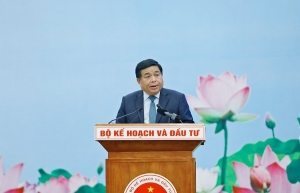 | Minister pledges public investment disbursement push The Ministry of Planning and Investment (MPI) is determined to expedite the disbursement of public investment funds this year, while eliminating inefficiencies in investment allocation, with the goal of exceeding the 65.1 per cent disbursement rate of 2023. |
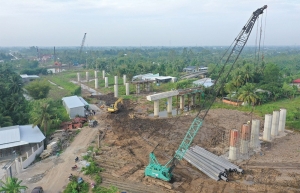 | Targets set high for disbursement The government has made drastic directions to accelerate public investment disbursement, with construction of numerous transport infrastructure projects to be implemented around the clock. |
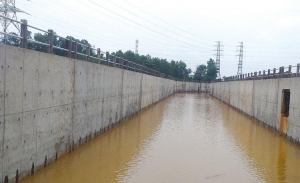 | MARD seeks to disburse public investment The Ministry of Agriculture and Rural Development (MARD) is eager to implement further solutions that can accelerate the disbursement of public investment capital. |
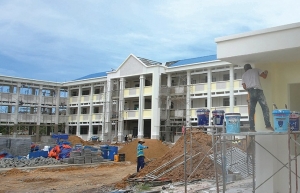 | Disbursement delay deemed unacceptable Public investment continues to suffer from poor disbursement, with names of culpable units being highlighted by the government. |
What the stars mean:
★ Poor ★ ★ Promising ★★★ Good ★★★★ Very good ★★★★★ Exceptional
Related Contents
Latest News
More News
- Vingroup pulls out of bid to invest in North-South high-speed railway (December 26, 2025 | 11:42)
- Strengthening supply chains through trade promotions and customs reform (December 24, 2025 | 14:00)
- PM orders investment model for North–South high-speed rail (December 22, 2025 | 17:43)
- LS Eco Energy to invest in Vietnam rare earth sector (December 22, 2025 | 17:31)
- Government moves to establish International Financial Centre (December 21, 2025 | 21:00)
- Vietnam's IFC to target global investment flows (December 21, 2025 | 18:00)
- Two national hospitals expand capacity with new facilities (December 20, 2025 | 09:00)
- Ha Tinh breaks ground on major Vingroup industrial and energy projects (December 19, 2025 | 18:24)
- EVN launches major power infrastructure projects nationwide (December 19, 2025 | 18:17)
- VAL inaugurates second production line to meet domestic animal feed demand (December 19, 2025 | 16:37)

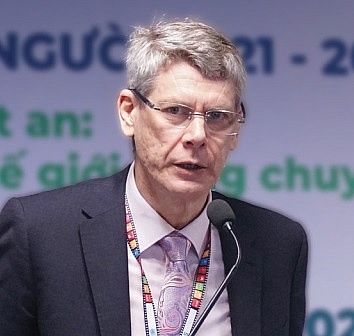


 Tag:
Tag:





















 Mobile Version
Mobile Version